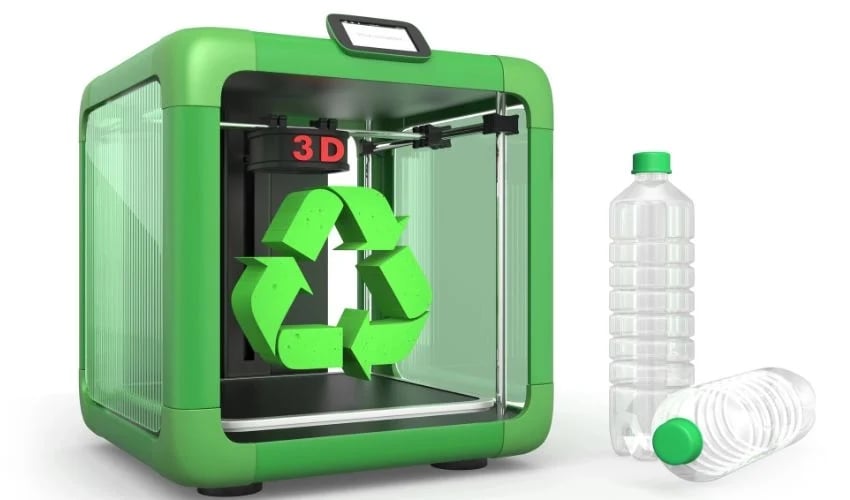
Additive manufacturing is usually seen as a greener different to conventional manufacturing strategies and mass manufacturing, which generates excessive emissions. One purpose for that is that 3D printing solely provides supplies the place they’re truly wanted, thus lowering waste. Though the sustainability advantages of 3D printing depend upon the method, supplies and elements used, it presents many alternatives to make trade extra sustainable and respectful of our sources. The UN’s Sustainable Growth Targets are additionally encouraging trade to pursue greener methods, similar to local weather safety measures or extra sustainable consumption and manufacturing patterns. On this article, we current ten the reason why 3D printing is taken into account extra sustainable, and the potential of this manufacturing expertise for a extra environmentally pleasant future.
#1: Discount of Waste and Materials
In comparison with conventional manufacturing strategies, 3D printing presents benefits when it comes to waste discount. Normally, subtractive processes similar to turning, drilling or sawing generate extra materials waste, for instance within the type of chips. This downside doesn’t come up with 3D printing, as the fabric is used instantly for the layer-by-layer development of the item. Nevertheless, it have to be acknowledged that the era of waste varies relying on the expertise, as powder and resin printing processes generate extra waste than different 3D printing applied sciences as a result of want for help constructions or extra powder that can’t be absolutely reused. Nonetheless, by exactly planning the required materials, software program features can optimize the 3D mannequin to attenuate materials utilization. This ensures a extra environment friendly use of sources and reduces power consumption and machine emissions.
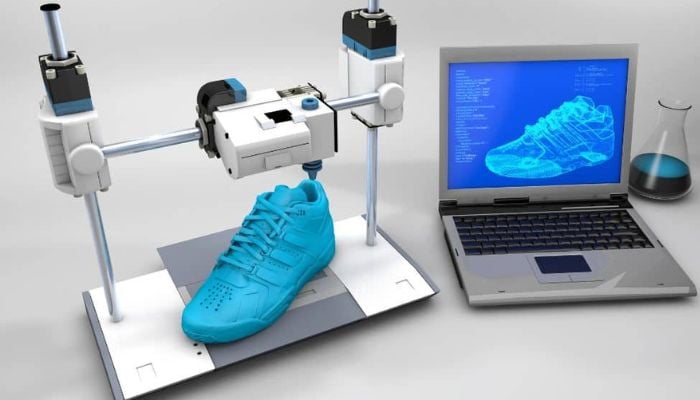
3D printing entails printing instantly onto the constructing platform, which minimizes materials waste (photograph credit: Devrimb)
#2: Native Manufacturing
Historically, many merchandise are sourced from distant places, resulting in international dependency and provide chains that influence our native economic system and setting. Nevertheless, because of native 3D printing, firms are in a position to produce their merchandise instantly throughout the neighborhood with out counting on exterior provides, thereby lowering CO2 emissions. It additionally avoids the usage of packaging usually related to the transportation of components.
#3: On-Demand Manufacturing
On-demand manufacturing can be linked to native manufacturing. Firms can manufacture merchandise flexibly and in step with demand, which considerably minimizes overproduction and the necessity for inventories. Spare components do not need to be saved in inventory, however might be produced as wanted. The pliability of additive manufacturing makes it attainable to supply personalized merchandise that meet the person wants of consumers and thus guarantee demand-oriented manufacturing, which may result in a discount in industrial processes sooner or later.
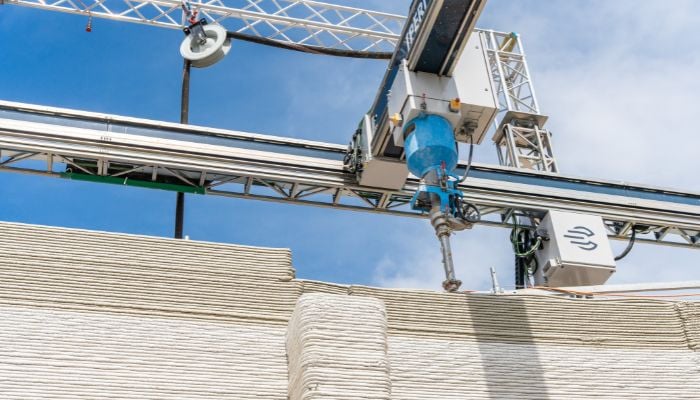
On development websites particularly, 3D printing, particularly concrete 3D printing, is used on web site, making development extra sustainable (photograph credit: Heidelberg Supplies)
#4: Service Life Extension Via Restore
The reusability of elements by 3D printing additionally promotes the round economic system. In trade, the DED (Direct Power Deposition) course of is usually used to restore broken elements by making use of materials layer by layer to the prevailing elements as an alternative of producing them from scratch. The method reduces the necessity for brand new uncooked supplies and extends the service lifetime of elements. Virtually all weldable metals can be utilized for this objective, which will increase the flexibleness and effectivity of the restore course of.
#5: Recycling and Upcycling
Misprints, faulty or not required print tasks can probably be melted down and reused for the manufacture of recent merchandise. Thermoplastic supplies similar to ABS, PETG or PLA particularly provide these recycling choices. Nevertheless, this nonetheless hardly ever occurs. The expertise is helpful for upcycling used merchandise by combining waste merchandise with 3D-printed workpieces and creating revolutionary one-offs. Regardless of the benefits talked about, recycling supplies additionally poses a problem, as the standard of the fabric have to be excessive sufficient to be reused in a printing course of. Multi Jet Fusion allows a sustainable strategy right here with its reusability price of as much as 80% of used materials and powder mattress fusion applied sciences may provide the opportunity of reusing as much as 98% of the powder, however as a result of lack of research surrounding this, that is unsure.
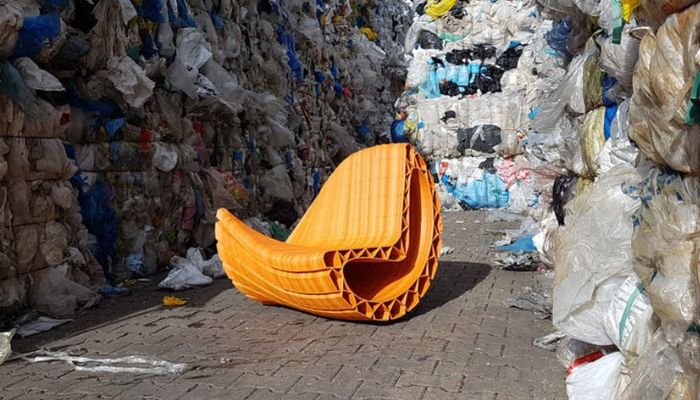
The Print your Metropolis undertaking transforms plastic waste into furnishings utilizing 3D printing (photograph credit: Print your Metropolis)
#6: Eco-Pleasant Supplies
Many sustainable supplies are actually obtainable for 3D printing, that are both recyclable or bio-based. Along with conventional metals and plastics, new supplies that may cut back the ecological footprint are more and more getting used. Examples embody biodegradable supplies similar to filaments comprised of corn starch, espresso grounds, sugar cane or wheat waste, which might be disposed of in a extra environmentally pleasant method. PLA, which is comprised of pure uncooked supplies similar to corn, is especially well-known. By including by-products, the filament might be nearly 100% bio-based. PLA can be biodegradable in industrial composting crops (even when its sustainability has been questioned). Non-fossil plastics similar to PET or PHA comprised of renewable uncooked supplies and recycled filaments comprised of ABS and PET additionally help the round economic system. Nevertheless, the sustainability of all these supplies will depend on varied elements, together with the uncooked materials supply, compatibility with ecosystems, transportation routes and recyclability. Steady analysis, experimentation and enchancment of current supplies may cut back environmental impacts sooner or later.
#7: Power-Saving Manufacturing
By combining a number of features in a single manufacturing run, 3D printing presents alternatives to avoid wasting power. A big benefit lies within the power effectivity of the tip product. Within the aerospace sector, weight discount by 3D printed components results in decrease gas consumption and a discount in emissions in comparison with historically manufactured components. By utilizing much less filler materials and extra environment friendly materials utilization, 3D printing allows sooner manufacturing with decrease power consumption. Moreover, particular filaments can be utilized which have a decrease melting level or a print mattress insulated with aerogel that may keep temperatures as much as 60°C with nearly no further energy consumption. Different measures that may be taken embody insulating the print head with silicone or rock wool, which reduces warmth loss, or constructing an enclosure across the printer to stop temperature loss.
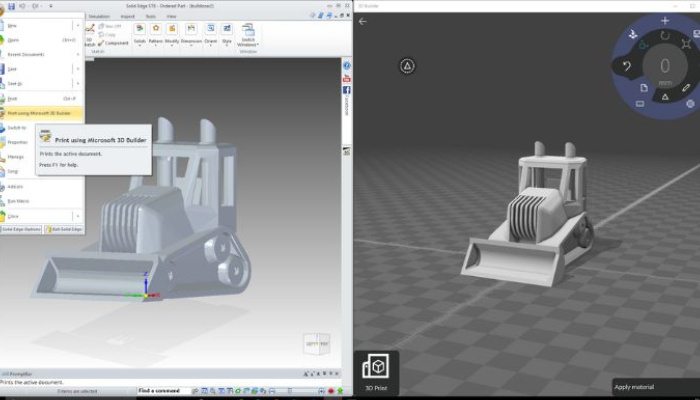
Utilizing software program, you possibly can optimize your design to avoid wasting materials (photograph credit: Strong Edge)
#8: Optimized Design Via Software program
Using 3D modelling software program allows efficient design optimization, lowering materials consumption and printing time and selling environmentally pleasant manufacturing processes. Digital simulations assist to take away pointless particulars and help constructions and a few software program offers instruments for early error detection and defect evaluation throughout 3D CAD design. The software program options make it attainable to check fashions digitally, saving materials and power by pointless check prints. The digital switch of CAD designs additionally reduces the necessity for manufacturing amenities and lowers transportation prices and emissions. As well as, the light-weight design allows materials financial savings by lowered filling and elevated wall thickness. Manufacturing advanced assemblies as one-piece elements reduces materials and power consumption. Work is presently underway on new processes that use synthetic intelligence to detect and proper printing errors in actual time.
#9: Environmental Safety Initiatives
3D printing not solely presents the potential for extra environmentally pleasant manufacturing, but additionally makes an efficient contribution to the preservation of species and our surroundings. For instance, the expertise is used to duplicate nature with a purpose to print coral, nests, reefs or beehives and to supply animals which have misplaced their shelter on account of local weather change with a synthetic dwelling that’s an identical to their pure habitat. The corporate can be concerned in ocean conservation tasks and the manufacturing of meat alternate options. This not solely protects animals, but additionally reduces CO2 emissions, because the consumption of 1 piece of beef generates as much as 12 kg of CO2. Numerous firms use additive manufacturing to supply plant-based meat, which guarantees a 95% decrease environmental influence in comparison with typical meat manufacturing.
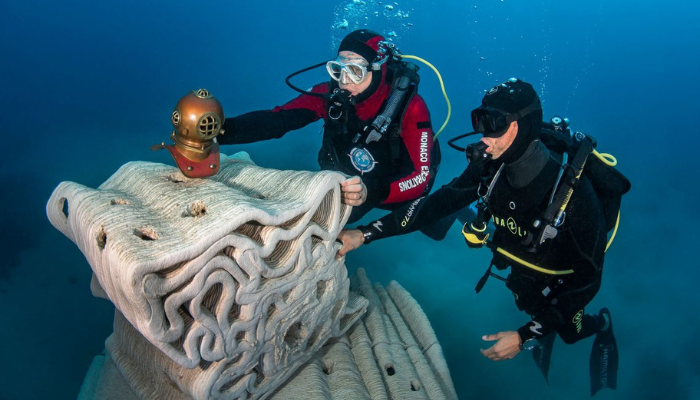
Divers carry a 3D-printed reef to the seabed (photograph credit: xtreee.com / Greg Lecoeur)
#10: Analysis and Innovation
Final however not least, the edge for prototype growth and experimentation in 3D printing may be very low. This permits firms and innovators to implement new concepts shortly and develop sustainable options. This flexibility leads to fixed product and expertise enhancements, particularly with regard to environmental safety. Many firms and start-ups are actively devoted to the additional growth of additive manufacturing with a purpose to make it extra environment friendly and much more environmentally pleasant. This revolutionary power opens up new prospects for artistic functions and industrial processes and ensures that 3D printing is repeatedly optimized when it comes to its sustainability.
Do you suppose that 3D printing is extra sustainable? Are there any main causes we ignored? Tell us in a remark beneath or on our LinkedIn, Fb, and Twitter pages! Don’t neglect to join our free weekly e-newsletter right here for the newest 3D printing information straight to your inbox! You can too discover all our movies on our YouTube channel.

